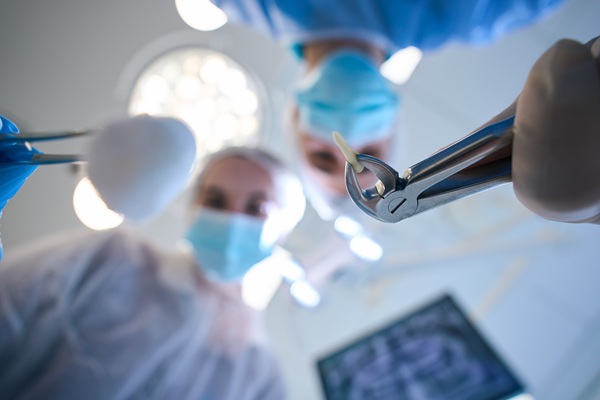When Are Surgical Tooth Extractions Necessary? Key Signs to Know
are more complicated than ordinary dental extractions. These procedures need a higher level of experience and skill. That is why an oral surgeon is the right dental provider to perform them. Knowing when surgical tooth extractions are necessary can help prepare you for your upcoming treatment.
Signs these procedures are necessary
The oral surgeon will assess the tooth first and then decide what type of extraction is necessary. Ordering dental X-rays will help the surgeon choose. Regular extractions can turn into a surgery when the surgeon needs to perform extra steps to remove the tooth. One instance is when the tooth breaks off during the extraction. The oral surgeon must cut the rest of the tooth into small pieces for easier removal.
Another instance is removing impacted teeth. These surgical tooth extractions often apply to the third molar. Impacted wisdom teeth do not erupt or emerge completely above the gumline. The oral surgeon must cut through the gum tissue and jawbone to remove the impacted tooth. In other cases, the oral surgeon must perform surgery when the teeth have curved roots.
When to extract a tooth
Studies show that teeth must undergo extraction because of crowding, trauma, or disease. The oral surgeon will remove the tooth if it is irreparable now. A crown, filling, or bonding cannot correct the dental damage. The surgeon will also recommend surgical tooth extractions if the infection is severe. Removing the teeth is necessary to prevent the infection from spreading to the neighboring teeth, jawbone, or the rest of the body. These extractions are also crucial if the tooth does not respond well to root canal therapy.
The differences between regular extractions and surgical tooth extractions
A regular extraction removes a tooth that is above the gumline. The oral surgeon will use forceps for this type of tooth removal. Surgical tooth extractions are for teeth with more complex situations. The surgeon must first remove the surrounding gum and bone tissue before extracting these teeth. The patient will need stitches to close the extraction site for proper healing. Prescribing a specific type of pain reliever is necessary after these extractions.
After surgical tooth extractions
Patients who had surgical tooth extractions often need sutures to close and heal the extraction sites. The surgeon will provide a list of aftercare instructions for the patient’s recovery. Following it is necessary to avoid complications. Below are some of them:
- Avoid spitting, smoking, or using a straw to prevent more bleeding
- Refrain from drinking, eating, and speaking two hours after surgical tooth extractions
- Drink plenty of cold liquids after the bleeding stops
- Maintain a soft diet on the first day after the extractions
- Refrain from brushing the extraction sites
- See the oral surgeon for follow-up checkups
Knowing when you need surgical tooth extractions can prepare you for the next visits
Surgical tooth extractions are more detailed than regular ones. These procedures are more complex. They need more tools and finer techniques that only an oral surgeon can deliver. Working with your provider can help you recover and return to your routine activities quickly.
Request an appointment here: https://tinyteethpediatricdentistry.com or call Tiny Teeth Pediatric Dentistry at (516) 243-1364 for an appointment in our Mineola office.
Check out what others are saying about our dental services on Yelp: .
Related Posts
Pediatric dentistry uses specialized equipment to ensure that children are comfortable during their dental visits. Specialized equipment includes smaller dental chairs, x-ray machines, and age-appropriate educational materials.The dental chair is one of the most significant pieces of equipment in a pediatric dentist's office. These chairs are designed specifically for children and help make the child…
Silver diamine fluoride is a popular minimally invasive technique that is used in dentistry. Specifically, pediatric dentists make use of this type of fluoride because it does not involve any pain or open wounds, both of which children and adolescents tend to fear. With that being said, pediatric patients often have more cavities than the…
When you visit the pediatric dentistry office, the dentist will typically suggest using a soft-bristled toothbrush for children's growing teeth, particularly those under two. A soft-bristled toothbrush is preferable and is gentle when removing plaque and debris, compared to a hard-bristled one, which may irritate gums.Toothbrushes are all about comfiness. When selecting a brush, parents…
If you are concerned about your child's oral health, we encourage you to schedule frequent visits to the pediatric dentistry office. In addition to lowering the risk of cavities, good oral hygiene has been shown to have far-reaching benefits for a child's overall health. They can get the nutrients they need from food and will…
